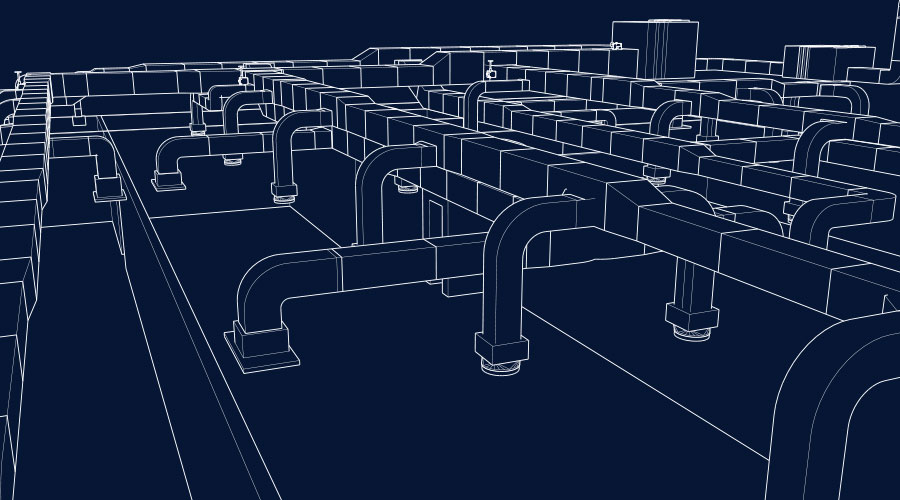Software That Succeeds
One department’s efforts to help technicians and managers work smarter by upgrading its maintenance management software
The response from front-line technicians to the maintenance software for the state of Washington’s Department of Transportation hardly qualified as even a rebellion. They simply ignored it.
“The workers just stopped using it, due to the cumbersome programming,” says Ron Moorehead, the department’s state facilities operations coordinator. Workers in four of the department’s six regions stopped using the computerized maintenance management system (CMMS).
Instead, they manually recorded their progress on work orders and in many cases were forced to double-enter data — for instance, recording time on a job on the work order and in the payroll system. Workers in the other two regions used the CMMS to a greater degree, Moorehead says.
Faced with such reactions and the resulting frustrations for managers and supervisors, Moorehead and other department officials had little choice but to start the process of specifying a new CMMS for the department’s maintenance and engineering. The results of their planning and decision making offer valuable lessons for maintenance managers who are undertaking the daunting process.
Limits and Liabilities
The department, with 86 employees statewide maintaining and operating about 860 buildings with 2.5 million square feet of space, had been using its previous software for about 10 years, Moorehead says. But its limitations eventually became too burdensome.
Perhaps most frustrating was the fact that the CMMS databases from the six regions were proprietary and independent and, thus, couldn’t be linked, Moorehead says. This setup prevented supervisors and managers from comparing cost and performance data gathered from each region’s work orders.
“The department was really a little behind the curve in terms of a CMMS,” says Duane Honeycutt, plant manager for the state’s southwest region in Vancouver, Wash., which consists of 11 technicians maintaining about 500,000 square feet. Because the department is a public agency, he says, “there were some funding issues that hindered our ability to step out and grab hold of the latest technology.”
Initial Steps
The team formed to research CMMS options started in 1999 and took about three years to complete its task. The group’s first step was to understand as much as possible the needs of the workers who would actually use the system daily.
“We wanted the system to be easy to use to minimize information the end user had to enter,” Moorehead says. Too often with the previous system, users saw empty data fields on the screen and felt they had to gather information to fill all of them, Moorehead says, instead of filling in only the high-priority fields. Initially, the new system requires users to enter a minimal amount of information on worker orders. But its sophistication will grow along with the users’ ability to use it more efficiently.
The CMMS group also decided on a web-based system.
“That way, you don’t have to install the software at every computer,” Moorehead says. Instead, end users can access the CMMS from any computer on which they can access the web.
To solidify their understanding of users’ needs, the group traveled to the regions to meet with workers, who gave them feedback on key features and functions of the new system. Their overall need, however, was straightforward.
“Mostly, they just wanted something,” Moorehead says. “Anything is better than nothing. They knew they weren’t keeping proper track of information.” While technicians in some areas used personal digital assistants (PDAs) to access and complete work orders, many did not. Honeycutt says that as the new CMMS expands, more technicians will use laptops and PDAs.
Early Returns
The department implemented the CMMS 16 months ago, hoping it would quickly deliver tangible benefits. According to Honeycutt and Moorehead, it has done so. Perhaps the biggest benefit the CMMS has delivered so far is greater efficiency among front-line workers.
“We’re now able to determine what are the critical areas of maintenance, and there is better time allocation,” Moorehead says. Time allocation has improved, he says, because technicians no longer have to perform double entry of some data, and less time entering information means more time on the job.
“It has helped the crews understand the need for being efficient,” Honeycutt says. “It really has helped them streamline their activities.
Adds Moorehead, “We know we can schedule all of the maintenance for a remote location, and they can do it all at once.” Where once technicians might have to make several round trips for materials and tools, now a technician can stock up once in the morning, make one round trip, and perform all the needed work.
It stands to reason that maintenance of some critical areas had been overlooked in most regions under the previous CMMS. Many of these areas were related to code compliance, Moorehead says, including septic systems, fire extinguishers and backflow preventers.
Access to more accurate cost data also has helped managers give state budget officials a better idea of actual costs of operations. Traditionally, budget officials gave the department a flat increase that applied to all facilities.
“But that doesn’t address the individual needs of each facility,” Moorehead says. “The new system gives us more accurate data on costs and needs.”
Adds Honeycutt, “Before, no one could tell you what they paid to patch a pothole.” Now, department officials armed with the costs of providing services are able to keep state officials better informed about department needs. And they are better able to tell officials exactly what funding cuts will mean in terms of curtailed services.
Lessons Learned
Moorehead now has been through the specification and installation of three software systems, and he understands better the lessons the processes have to offer.
First, he says, such projects need a champion, “a dedicated person to lead the charge,” as he describes it. “You almost need a full-time person. You can’t do it right in just two or three hours a day.”
Second, he advocates getting end users on board early and keeping them informed throughout the process. Honeycutt says the meetings between the CMMS group and front-line technicians were central to the project’s success.
“Realistically, (department officials) could have just handed us the final product,” he says. “The key part was getting all areas involved. Each region sort of has its own way of doing things in certain areas, and this shapes it into something that everybody can buy into.”
Finally, Moorhead advises managers in similar situations to secure the backing of top management as early as possible in the process.
“You need an advocate, a champion,” he says. “You need a dedicated person to lead the charge. It almost needs a full-time person You can’t do it two or three hours a day.” Honeycutt concurs. As an example, he cites the need for vast amounts of specific data from equipment — voltages, amp ratings, motor size, etc. — on which the CMMS will operate.
“They put in thousands of hours in just data gathering,” he says, adding that technicians never would have been able to dedicate such large blocks of time to the task without the backing of the organization’s top officials. “Things like this can’t happen and be successful without support from upper management.”
Benefit: ‘We’re one of the best values’
Maintenance and engineering managers in many organizations have heard for decades that their departments were “necessary evils,” hidden away in buildings, underappreciated by most, and called on only when something breaks.
Rick Honeycutt now knows that stereotype doesn’t fit his operation any more. Honeycutt, plant manager for the southwest region of the state of Washington’s Department of Transportation, knows so thanks to the department’s new computerized maintenance management system (CMMS).
The CMMS allows Honeycutt and others in the department to gather more data and analyze it more effectively to determine the department’s operating costs. More importantly, he can compare them against the same costs for local contractors or against national statistics. The results have been heartening, to say the least.
“Come to find out, we’re one of the best values,” Honeycutt says.
Those comparisons are important to the department because they reinforce their belief that their crews are skilled craftspeople who deliver services cost-effectively to the facilities they maintain.
For too long in many organizations, including public ones, maintenance departments have been unable to fully explain to those in charge of the budget that funds allocated to maintenance were money well spent and that cuts in those funds would have real detrimental consequences.
“This (application) provides the data to compare with other service sources,” he says.
So instead of paying an outside technician to come to the work site and perform a specialized task, Honeycutt says, facilities managers can call on the maintenance department and know that they getting a multi-skilled technician — whether the task is related to HVAC or electrical systems or overhead garage doors — who already is familiar with the facility and who will do the work cost-effectively.
|
Related Topics:











